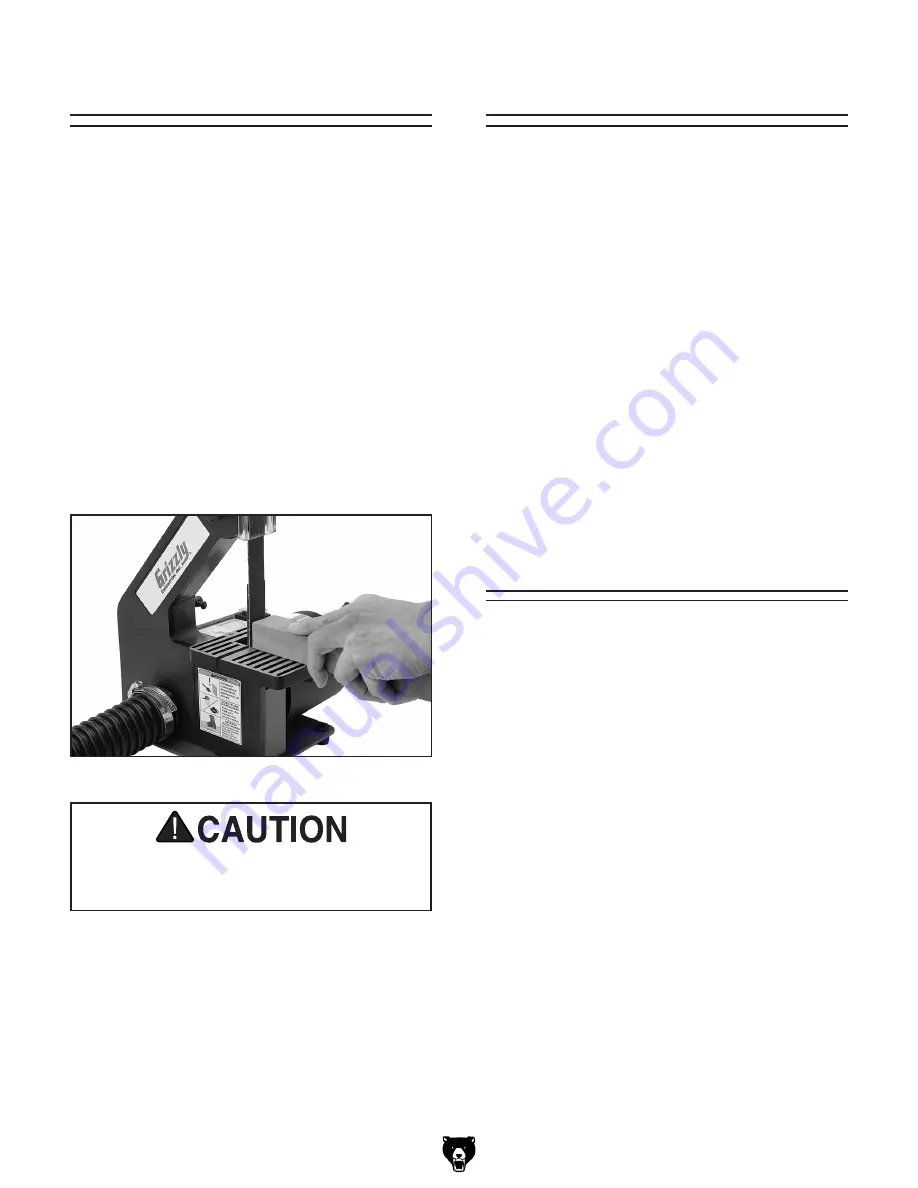
Model h3140 (Mfg. after 6/02)
-15-
Operation Overview
Stock inspection
To avoid the risk of kickback and personal
injury, always keep the workpiece firmly on
the table.
a basic operation with this machine is as follows:
the operator adjusts the table as needed for the
sanding operation, then turns the sander and dust
collector
on
and makes sure the belt is tracking
properly.
the workpiece is placed flat on the table and
pressed in to the moving sanding belt. the platen
behind the sanding belt provides a flat surface to
ensure that the sanded portion of the workpiece is
also flat. the table can be tilted and locked in place
to sand a variety of angles on the workpiece.
Various additional techniques can be used for
sanding curves or shapes, but in all operations,
the workpiece must be firmly supported against
the table when it is in contact with the workpiece.
figure 8. example of belt sanding.
Sanding Tips
•
use the correct sandpaper and grit for the job
to ensure good sanding results.
•
replace the sandpaper with a higher grit to
achieve a finer finish.
•
extend the life of the sandpaper by reg-
ularly using a pro-stiCK
®
sanding pad
(
Accessories on page 19).
•
When bevel sanding, make any necessary
guide lines on the longer side of the board so
they will be visible during sanding.
•
always turn the sander
on
and allow it
to reach full speed before engaging the
workpiece with the sandpaper.
•
Keep your workpiece moving across the
width of the sanding belt to prevent grooves
or ruts in the workpiece surface or excessive
wear to the sanding belt.
follow these rules when choosing stock:
•
DO NOT sand stock that contains large or
loose knots. injury to the operator or damage
to the workpiece can occur if a knot becomes
dislodged during the sanding operation.
•
Remove foreign objects from the
workpiece. Make sure that any stock you
process with the sander is clean and free of
dirt, nails, staples, tiny rocks or any other for-
eign objects that could damage the sanding
belt or eject from the workpiece during sand-
ing.
•
Scrape all glue off the workpiece before
sanding. glue deposits on the workpiece,
hard or soft, can gum up the sanding belt and
produce poor results.
















































